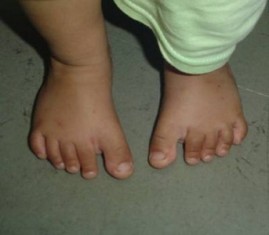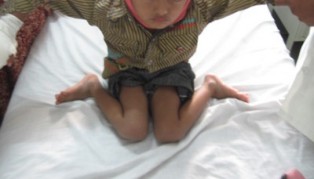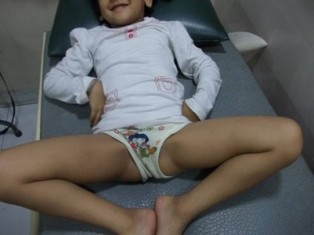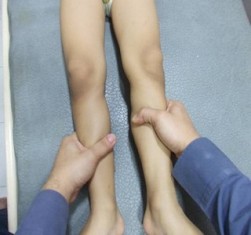In this condition the child will walk or run with the leg turned inwards. Intoeing is usually observed by parents once the child starts walking. In severe cases the child may stumble or trip because of one leg being caught in the other. There may be a family history.

There are three causes.
- The foot is turned inwards (metatarsus adductus)
- The tibia is turned inwards (tibialintorsion)
- The thigh bone (femur) is turned inwards. (excessive femoral anteversion)
Each of this condition may be present individually or in association with other orthopaedic conditions. This condition should improve over a period of time and the child should have a normal gait by 4 years. Problems in hip joint and other conditions need to be ruled out if this condition does not improve.
- Metatarsus adductus. In this condition the part distal to the mid part of the foot is turned inwards. This condition improves over a period of time. Simple abduction exercises for foot can be taught to parents. In moderate to severe cases plasters, splints and shoes may be required.
- Tibialintorsion. In this condition the lower leg (tibia) is turned inwards. It may be present since birth. As age increases the bone will twist outside on its own. No special treatment is usually required in this condition
- Femoral intorsion. In this condition the upper end of the thigh bone near the hip joint has an increased inward twist. As a result of this the whole leg will appear to be turned inwards when the child starts walking. This condition corrects over a period of time. Outward twisting will happen on its own once the child starts walking. The child should be encouraged to sit cross legged and avoid ‘W’ sitting. Certain abduction exercises will help stretch the muscles and help the child to improve faster. Surgery is required if the anteversion is severe and is usually performed after 8 yrs. It involves cutting the bone and untwisting it.




Early assessment by a specialist like Dr. Sameer Desai ensures the best outcome, helping children achieve proper walking patterns and mobility. For expert Intoe Gait treatment in Pune, consult Dr. Sameer Desai, a leading Bow Legs Specialist in Pune. Book a consultation today!
